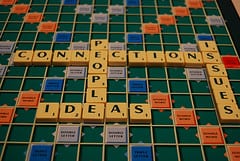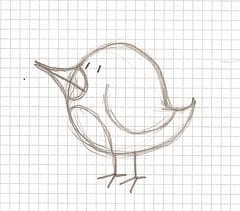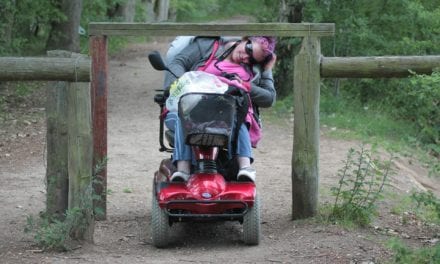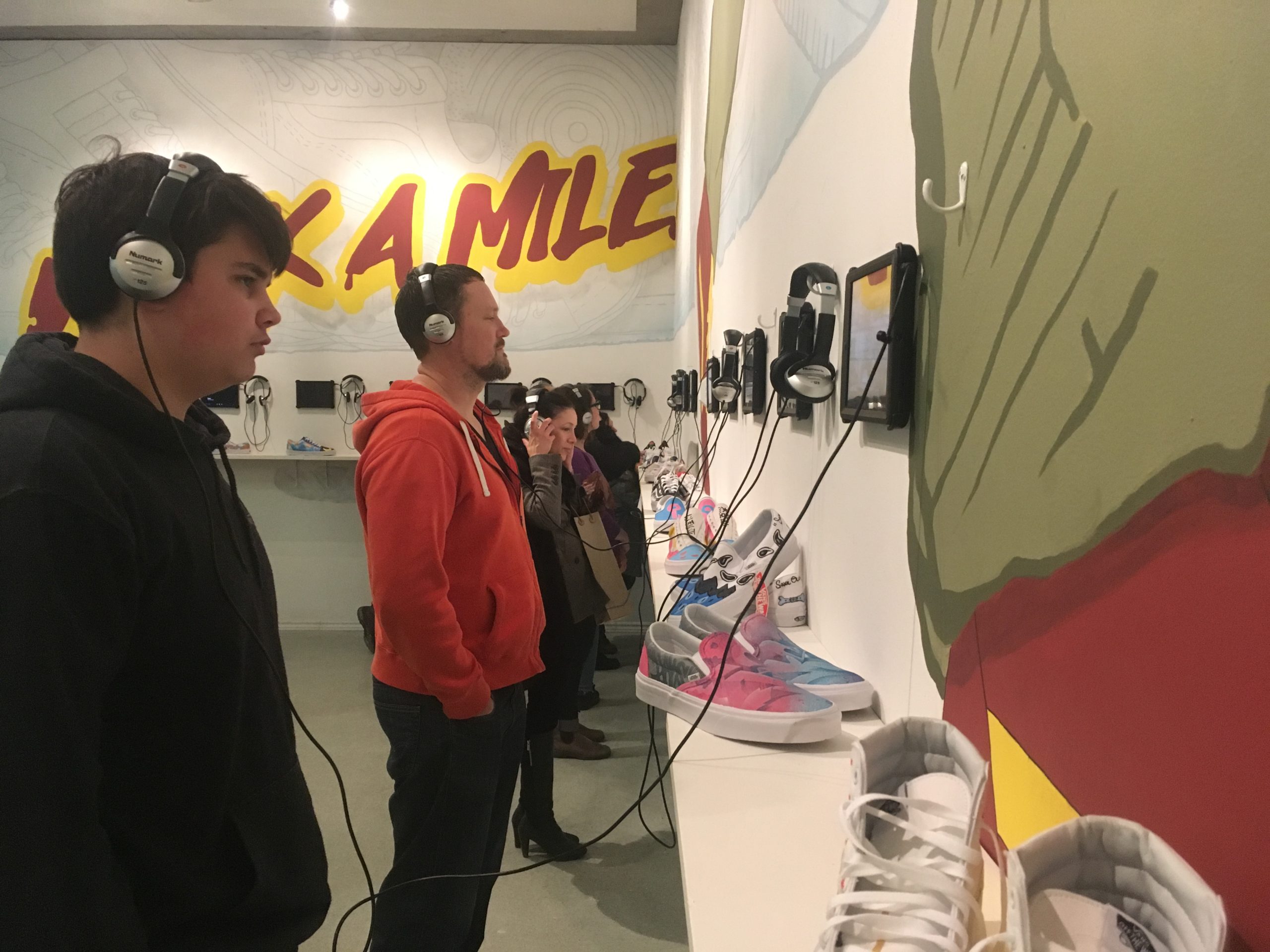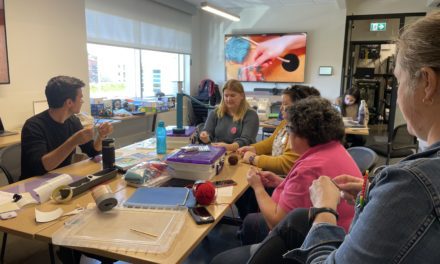Some time ago I wrote a blog post about the importance of being a connected educator. In the U.S., October is Connected Educator Month with many opportunities for professional development and making connections. This seemed a perfect time to revisit the possibilities of connections and connecting.
One person from whom I get many ideas to think about, blog posts to read and other interesting tidbits (on Facebook and on Twitter) is Tami Brewster, a teacher at Hampstead School. Most of her posts on Facebook are about education, either reposts from other educators, thoughts about her own classroom or questions that she needs answered. I went to speak with her about the importance of a professional learning network (PLN) to her.
I visited Tami at her school and asked her how she grew her online PLN. She spoke about going to conferences and symposia and starting to follow people she met on Twitter. The face-to-face encounters led to an online relationship. In other cases, through recommendations from people, she started to follow educators and then was always delighted when she had the opportunity to meet them face-to-face. Hugs always ensued! Tami interacts with them through Twitter and Facebook. While Facebook started for her as a way to connect with family, it has turned into an important part of her PLN. She posts good practices, sometimes her failures (to let everyone know we are all human and not everything works out the way we expect it to), links to free apps she hears about, meaningful blog posts written by educators… Slowly she has built up online relationships with teachers both in North America and in other parts of the world – teachers who teach in circumstances similar to hers. They are a source of ideas and inspiration.
When Tami makes connections through recommendations from other people, she always checks out the profiles and credentials of these educators before deciding to follow them. The idea is to follow those whose ideas and opinions you value, not just to collect people to follow. Twitter can be overwhelming if you follow too many people!
But online is not the only kind of PLN to have. I am sure many of you already have a PLN – you just don’t call it that. It’s all the colleagues both within your school and from other schools with whom you share ideas. Tami has made a point of cultivating her face-to-face network.
Within Tami’s school, she is fortunate to have a schedule that allows the cycle team to meet “should they wish”. PLC (professional learning community) time is blocked in a couple of times a week. And meet they do! I spoke with Tami, along with Guila Luck and Heather Strulovitch. The three, along with others in the cycle, have been preparing to implement a 1:1 BYOD (bring your own device) environment in their classrooms. They have not only used planning time in school but have been meeting on Saturdays to try to make this new way of working be a success. They, in turn, have reached out via Twitter and Facebook to get help from others who have already implemented this kind of project getting suggestions and advice on everything from technical issues, to acceptable use policies, to good educational practices. Tami described how, with the strong online connections they have cultivated, they are able to get answers to questions quickly. By putting it out into the universe, so many people see it, and if everybody is testing out your problem, the sooner answers are found. Tami described how someone was trying to see how far he could push an app to do what he wanted. He was testing the limits of the app. These teachers are testing their own limits – how far they can push themselves to make their classrooms real hubs of excited, engaged learners. Guila, a first year iPad user, talked about the importance of being able to get mentoring from colleagues with more experience (she also relies on students to teach her at times). Heather spoke about how knowing that you have a community of teachers to turn to, to share with, means that debriefing after a lesson will help you see ways to change, to find new approaches. Not every lesson is perfect, but it is the reflection afterwards and the bouncing of ideas off others that helps her evolve as a teacher. It gives her that extra drive to keep going. This group of teachers has built a community where they can share the negatives along with the positives (trust is an important aspect) and they all have become stronger teachers for it.
Tami is also in touch with teachers from other schools in the city who, like her, work in English / inner city schools. They face similar challenges and can offer each ideas and support. They share best practices – this year , the question: “What are you doing for the month of September?”, was put out there. This resulted in each teacher finding some new ideas they could put in place in their own classrooms. Sharing happened partly face-to-face, but mainly through the sharing of files through their Google Drive accounts and through e-mail and even texting.
Now that the students are starting to use their devices, they too are connecting out of school hours, within a closed community, about schoolwork. Tami can see that they are engaged outside of school time; the students, too, see the power of connection.
Tami described having a PLN as giving her a window into many classrooms around the world. It has given her access to ideas and resources that she may not have had. And most of all, it has given her inspiration. She turns her back on “We’ve always done it this way.” We need to change and evolve to meet the needs of today’s students. Her PLN has given her the push to try something different. Each year, now, she tackles new ideas and has found ways to differentiate and to engage her students in more meaningful work.
And it keeps her energized.
Follow Tami on Twitter @brewstami


